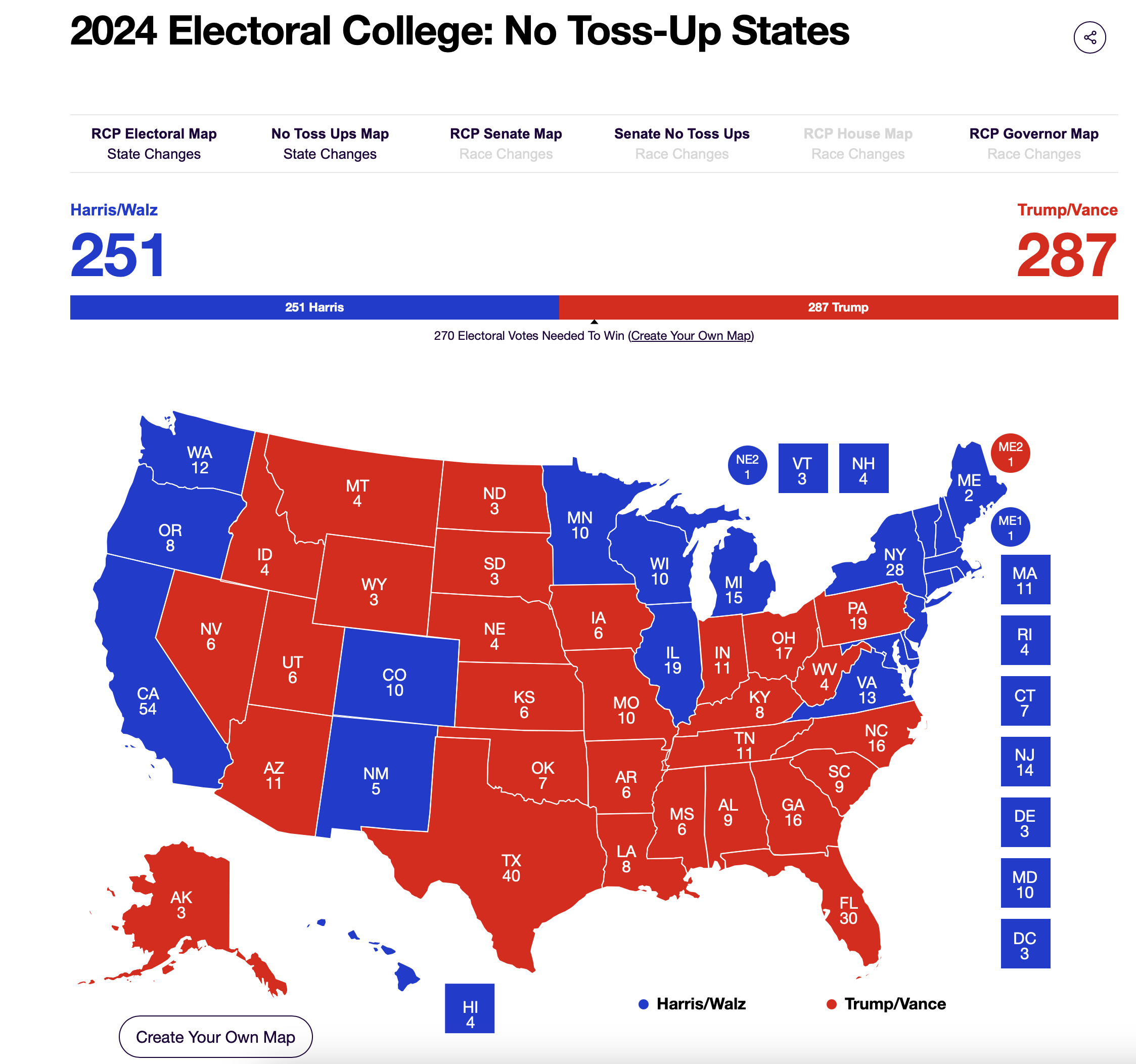Saturday’s RealClearPolitics 2024 electoral map showed former President Donald Trump leading in four key battleground states and narrowly defeating Vice President Kamala Harris in November. Despite his campaign facing challenges from a resurgent Harris, Trump remained ahead in key battleground states including Arizona, Georgia, Michigan, Nevada, Pennsylvania, and Wisconsin. As of Saturday morning, Harris had not yet emerged as the frontrunner for the White House in November.
The map had none of the states the candidates needed to win in its toss-up column but did show Trump beating Harris in Arizona, Georgia, Nevada, and Pennsylvania. Meanwhile, the Saturday RCP electoral map found Harris keeping both Michigan and Wisconsin away from Trump for the second election in a row.

In 2016, Trump secured victory over Hillary Clinton with 304 Electoral College votes—exceeding the 270 needed to win the presidency—by capturing Michigan, Pennsylvania, Wisconsin, Georgia, and Arizona, while losing Nevada. If Saturday’s RCP holds, the polling aggregator’s map shows Trump and his running mate Sen. JD Vance (R-OH) defeating Harris and her running mate Democratic Minnesota Governor Tim Walz 287-251. Meanwhile, an Ipsos poll released Thursday found Trump and Harris in a “statistical dead heat” in seven battleground states.
Ipsos reported: “A new poll of Americans living in the swing states of Michigan, Pennsylvania, Wisconsin, Georgia, North Carolina, Arizona and Nevada finds Vice President Kamala Harris and former President Donald Trump are in a statistical dead heat for the presidency. The survey shows that many people in swing states are concerned with inflation, immigration, and political extremism or polarization. When asked how the candidates perform on these, Trump outperforms Harris on inflation and immigration, while neither candidate has a clear lead on the issue of political extremism and polarization.”
Polling this week has been extremely dynamic between Trump and Harris just a few weeks after the latter became the Democratic Party’s de facto nominee — and then actual nominee — following President Joe Biden’s decision to exit the race. While all major polls show Harris having closed a significant gap that opened up between Trump and Biden, with the former president having the advantage, Trump has managed to pull ahead in some of the more recent surveys, including among a coveted voting bloc in a blue state.
Trump has taken a narrow lead among Jewish voters in deep-blue New York. According to a Siena Research Institute poll released Tuesday, Trump now leads with 50% of likely Jewish voters, edging out Harris, who has 49% support. This slim lead for Trump represents a significant shift from June, when President Biden was ahead among likely Jewish voters in New York with a 52%-46% margin over Trump, Fox News reported.
Harris’s rise to the top of the Democratic ticket has sparked concerns among some supporters of Israel, who worry that her support for the Jewish state may be diminishing. Critics argue that she has distanced herself from the Biden administration’s stance since the onset of the Israel-Hamas conflict in the Gaza Strip. These fears were further reinforced by her decision not to go with Pennsylvania Gov. Josh Shapiro, who is Jewish, and opt instead for Minnesota Gov. Tim Walz, who is even further to the left of Harris on some issues.
Disclaimer: This article may contain commentary.

